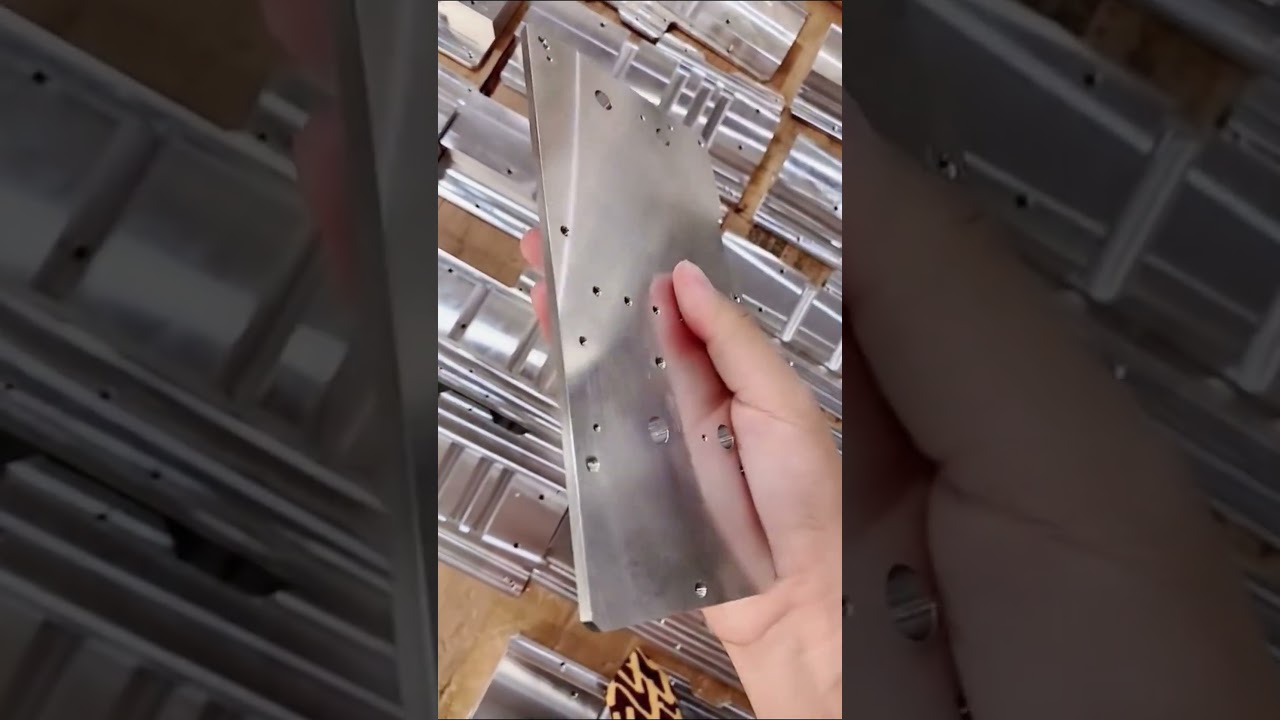Understanding Batch Aluminum Alloy Parts Machining
In the world of manufacturing, precision and efficiency are cornerstone principles that govern production processes. This is especially true when it comes to batch aluminum alloy parts machining. As industries increasingly demand optimized components that meet high-performance standards, the role of CNC (Computer Numerical Control) machining has never been more pivotal. By delving into the intricacies of batch processing, companies can significantly enhance productivity while maintaining quality.
What is Batch Aluminum Alloy Parts Machining?
Batch aluminum alloy parts machining involves the mass production of components made from aluminum alloys using CNC technology. Unlike traditional machining methods, which often focus on individual or low-volume production, batch machining emphasizes creating multiple parts concurrently. This approach not only increases output but also ensures consistency in the final products.
These aluminum parts are integral to various industries, including automotive, aerospace, electronics, and consumer goods, where weight, strength, and corrosion resistance are critical factors. Aluminum alloys, known for their favorable properties, serve as the material of choice, offering a balance between weight and strength, alongside excellent machinability.
The CNC Machining Process
The CNC machining process consists of several key stages that transform raw aluminum alloys into precision-engineered parts.
1. Design and Modeling
The first step involves creating a Computer-Aided Design (CAD) model of the desired part. Designers utilize specialized software to draft intricate models that account for dimensional accuracy and functional requirements. This digital blueprint informs the CNC machine on how to shape and modify the aluminum alloy.
2. Selecting the Right Aluminum Alloy
Choosing the appropriate aluminum alloy is crucial, as different alloys possess varying characteristics. Common aluminum alloys used in machining include:
- 6061 Aluminum: Known for its good mechanical properties and weldability, 6061 is commonly used in structural applications.
- 7075 Aluminum: Renowned for its exceptional strength-to-weight ratio, 7075 is frequently used in aerospace and military applications.
- 5052 Aluminum: With excellent corrosion resistance and ductility, 5052 is favored for marine applications.
Depending on the application, the right alloy will ensure optimal performance and reliability of the finished product.
3. Setting Up the CNC Machine
After finalizing the design and selecting the alloy, the next step is setting up the CNC machine. This involves calibrating the machine tools, loading the raw aluminum alloy, and inputting the CNC code generated from the CAD model. The machine is programmed to execute specific sequences that dictate the movement of the cutting tools with extreme precision.
4. Machining the Components
With everything set, the CNC machine begins the machining process. The machine’s rotating tools cut, mill, drill, and shape the aluminum alloy according to the programmed specifications. This stage is characterized by high-speed operations that allow for efficient material removal, resulting in intricate shapes and detailed features.
Batch processing enables the simultaneous production of multiple components, reducing the overall cycle time and minimizing labor costs. During this phase, the machine uses various techniques such as:
- CNC Milling: Employing rotating cutting tools to remove material, creating features such as pockets, contours, and flat surfaces.
- CNC Turning: In which the workpiece rotates while the cutting tool remains stationary to produce cylindrical shapes.
- CNC Drilling: Creating holes in the parts, essential for assembly and functionality.
5. Quality Control
Quality assurance is vital throughout the machining process. After the parts are machined, they undergo rigorous inspection to ensure they meet tolerance levels and quality standards. Techniques such as laser scanning, CMM (Coordinate Measuring Machines), and various non-destructive testing methods are employed to verify dimensional accuracy and integrity.
Advantages of Batch Aluminum Alloy Parts Machining
Businesses increasingly adopt batch aluminum alloy parts machining due to the myriad advantages it offers:
1. Improved Efficiency and Reduced Lead Times
Producing multiple components in a single run optimizes machine usage and significantly shortens lead times. This efficiency is particularly beneficial in industries where time-to-market is critical.
2. Cost-Effectiveness
Batch machining reduces manufacturing costs by lowering setup times and material waste. By machining multiple parts simultaneously, companies can maximize throughput and minimize downtime.
3. Consistency and Precision
CNC machining ensures high levels of precision and consistency across all produced parts. The automated nature of CNC machines minimizes human error, which is essential for maintaining strict quality controls.
4. Flexibility in Design
The adaptability of CNC technology allows manufacturers to easily adjust designs as needed. This flexibility is crucial for responding to market demands or engineering changes without incurring excessive costs.
Applications of Batch Aluminum Alloy Parts Machining
The versatility of batch aluminum alloy parts machining makes it applicable across numerous sectors, including:
1. Aerospace Industry
Aluminum alloys are fundamental in the aerospace field owing to their lightweight yet robust properties. Components like frames, brackets, and housings are commonly produced using batch machining techniques.
2. Automotive Industry
The automotive sector heavily relies on aluminum components for vehicle construction to curb weight and enhance fuel efficiency. Batch machining enables the production of engine parts, frames, and structural components with high precision.
3. Electronics Manufacturing
In electronics, aluminum alloys are utilized for casings, heat sinks, and connectors. CNC batch machining ensures that these components meet specific tolerances required for optimal performance.
4. Consumer Products
From kitchen appliances to sporting goods, aluminum’s appealing aesthetics and lightweight nature make it popular in consumer products. Batch machining allows manufacturers to produce large quantities of these items efficiently.
Future Trends in CNC Machining of Aluminum Alloys
As technology continues to evolve, several trends are shaping the future of CNC batch aluminum alloy parts machining:
1. Automation and Industry 4.0
The rise of automation and smart manufacturing is revolutionizing production. IoT (Internet of Things), AI (Artificial Intelligence), and machine learning technologies are being integrated into CNC machines, enabling real-time monitoring and predictive maintenance.
2. Sustainability Practices
With increasing environmental concerns, manufacturers are focusing on sustainable practices. Recycling aluminum and implementing energy-efficient machining processes are key areas of improvement that align production with eco-friendly principles.
3. Advanced Materials and Techniques
The continuous development of advanced aluminum alloys and machining techniques promises to enhance the properties of final products. Innovations such as additive manufacturing and hybrid machining processes are emerging, offering new possibilities in part design and production.
4. Customization and Small-Batch Production
While batch machining focuses on mass production, there is a growing trend toward customization. The ability to quickly switch production setups allows manufacturers to cater to niche markets or unique customer requirements efficiently.
Conclusion
Batch aluminum alloy parts machining is an essential component of modern manufacturing that combines efficiency, precision, and versatility. By employing advanced CNC technologies, industries can produce high-quality components that meet the rigorous demands of various applications. As technological advancements continue to reshape the landscape of machining, the focus on customization, sustainability, and automation will undoubtedly enhance the role of batch machining in the years to come.
With its vast applications and benefits, businesses that adopt efficient batch machining processes will position themselves favorably in an increasingly competitive market. Embracing this evolution is key to sustaining growth and innovation in the manufacturing sector.
Daguang focuses on providing solutions such as precision CNC machining services (3-axis, 4-axis, 5-axis machining), CNC milling, 3D printing and rapid prototyping services.

















